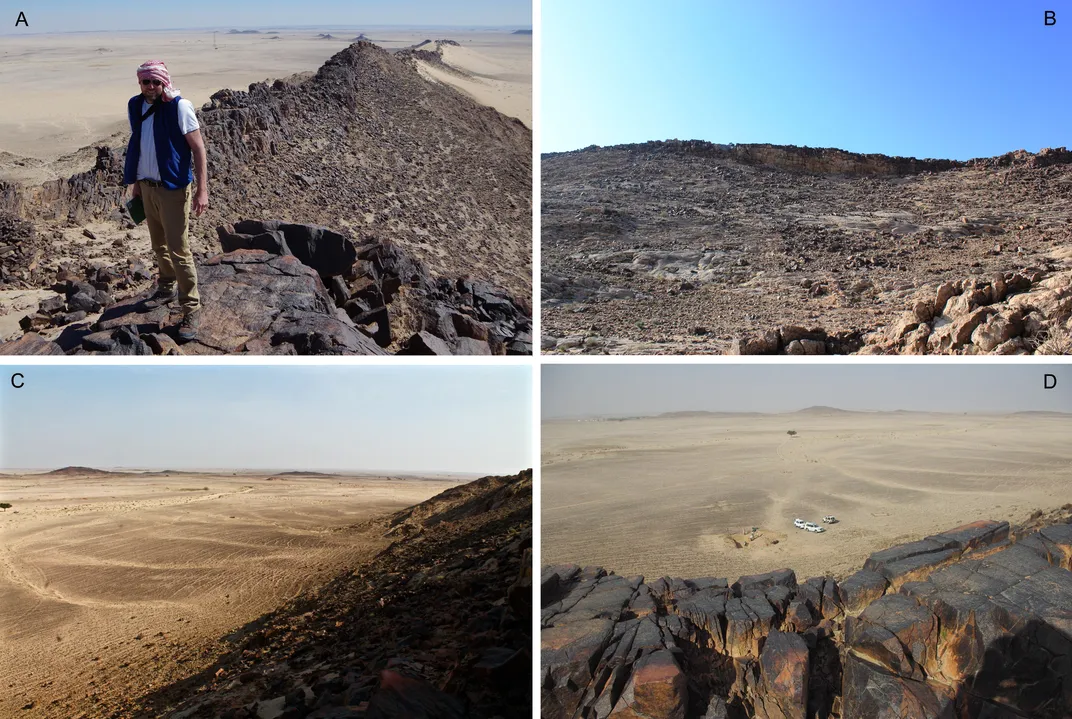Laziness May Have Contributed to the Decline of Homo Erectus
Researchers suggest early humans pursued “least-effort strategies” when crafting tools, collecting resources
:focal(1679x734:1680x735)/https://tf-cmsv2-smithsonianmag-media.s3.amazonaws.com/filer/d3/3e/d33e66de-6dbe-4ead-872d-e89fd9a8e45c/journalpone0200497g009.png)
The next time you feel like taking the path of least resistance, consider the fate of humankind’s ancestral predecessor, Homo erectus: According to the authors of a new study published in PloS One, laziness may have precipitated the early humans' extinction, leaving them unable—and unwilling—to adapt to changing environments.
Jon Healy of the Australian Broadcasting Corporation reports that researchers from Canberra's Australian National University based their findings on archaeological excavations conducted in Saffaqah, Saudi Arabia, in 2014. The team found that H. erectus tended to pursue “least-effort strategies” when crafting tools and collecting resources, even sticking to one generic tool for most activities.
In a statement, lead author Ceri Shipton, an archaeologist at ANU, notes that the primitive peoples “really don’t seem to have been pushing themselves.”
He adds, “I don't get the sense they were explorers looking over the horizon. They didn't have that same sense of wonder that we have.”
H. erectus—renowned as the first hominid species to spend most of its time standing upright—often lived in areas that offered easy access to stones and water, Live Science’s Yasemin Saplakoglu writes. The ANU team discovered that the early humans who had inhabited the Saffaqah site made stone tools out of whichever rocks happened to be lying nearby, ignoring quality in favor of convenience. A nearby outcrop would have provided better quality stones, but because access required extraneous climbing, H. erectus settled for pieces of rock that rolled down and landed at the bottom of the hill.
When the archaeologists ventured to the top of the outcrop, they found no evidence of H. erectus' presence.
“They knew it was there, but because they had enough adequate resources they seem to have thought, 'why bother?'," Shipton says.

Comparatively, Neanderthals and early Homo sapiens expended much energy on resource collection. These later species, according to a press release, often climbed mountains in search of high-quality stone and labored to transport the heavy rocks back to camp.
As the region’s rivers dried up, creating the dry Saudi Arabian desert seen today, Shipton theorizes that H. erectus was unable to locate increasingly scarce water. Ultimately, the environment simply became too dry to sustain its population.
Laziness and conservative tendencies—as represented by the consistent use of least-effort tool-making strategies despite a changing environment—likely exacerbated the species’ downfall.
“They were very short term in their view," Shipton tells Healy. "They would be just planning just a few hours, perhaps a day ahead at most, whereas Homo sapiens and Neanderthals [did] things like target seasonal migration, so they’re planning perhaps for the year ahead.”
Bryan Nelson of Mother Nature Network points out that the study’s findings fail to account for H. erectus' longevity. The species survived for more than one million years, dwarfing both the Neanderthals’ 400,000-year tenure on Earth and H. sapiens’ 200,000-year (and counting) existence.
According to Nelson, evidence for H. erectus' “ambitious, curious streak” is plentiful. After all, these early humans were the first to master fire and develop complex hunter-gatherer societies.
It’s also worth considering the benefits of least-effort strategies, which conserve energy and could represent rational, adaptive behaviors engineered to prolong survival in an unfriendly environment.
“Homo erectus was, by most measures, a highly successful species,” Nelson concludes. “If they were lazy, we might want to reconsider the adaptive advantages that laziness must have played in the story of human evolution."
/https://tf-cmsv2-smithsonianmag-media.s3.amazonaws.com/accounts/headshot/mellon.png)
/https://tf-cmsv2-smithsonianmag-media.s3.amazonaws.com/accounts/headshot/mellon.png)